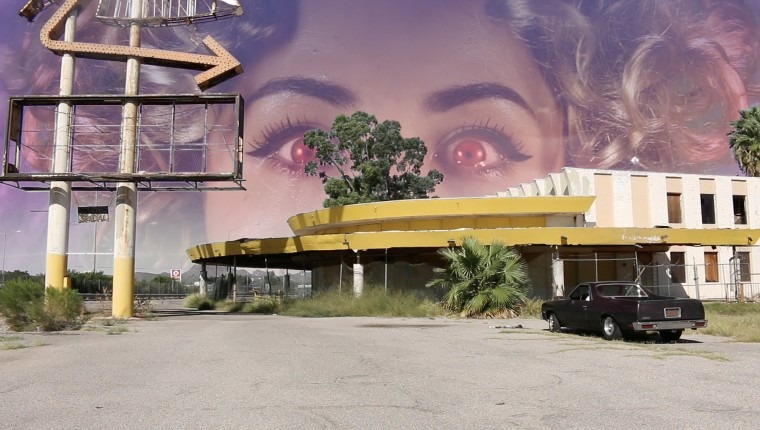. . .
The words ‘contemporary,’ ‘colorful,’ ‘daring,’ and ‘strong,’ come to mind when experiencing the visual art of Marina Shaltout, currently a visiting professor at Sarasota’s Ringling College of Art and Design – from her ‘baddies’ photo series of female monsters, to her video installation Gussy depicting a woman losing her composure while making gelatin molds.
Throughout her work, Marina explores what it means to be a woman in the eyes of society, critiquing it through a parody-esque approach. In doing so, she seeks to break molds in order to reconstruct a more genuine, honest representation of what she feels it means to be a woman.
Her work is relatable to those who see ourselves reflected in this complex, feminine experience.
Shaltout’s work strives to be experimental and consists of environments that are captivating and immersive for the viewer – using ideas of mythology, popular culture and cinema to create compelling stories of women and what they face daily. It’s like stepping into a bizarre world she controls.
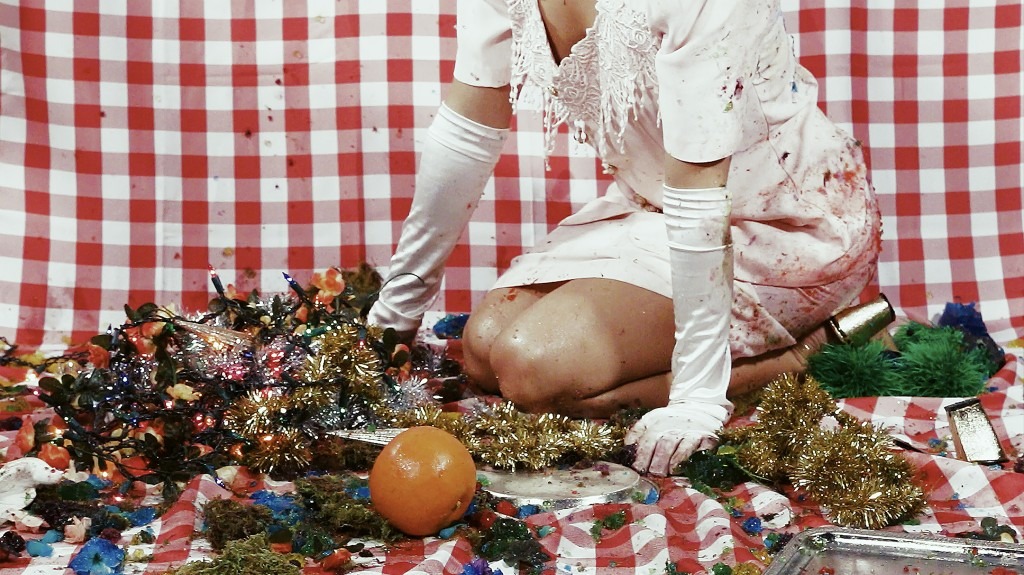
Luna May – Where did you grow up and how was your childhood?
Marina Shaltout: I was born in Missouri, spent two years in upstate New York from ages 4-6, and then spent the rest of my childhood and teenage years after that in Bloomington, Illinois.
My life was quite normal as a child, but my teenage years were more complicated. My parents divorced and my father took over all parenting after I turned 10 because my mother was battling a serious addiction.
I struggled a lot during those years to understand myself and how I was supposed to transition into adulthood. My father is wonderful, but it was really difficult for me to find a positive female role model at that time. Because of this, I had to learn all the lessons of womanhood by making my own mistakes. These experiences absolutely led to my fascination with female stereotypes and my desire to dismantle them.
Many representations of women embody monstrosity or evilness – stories of Eve, Medusa, Lilith, Kali, and films such as Carrie, Rosemary’s Baby, Ginger Snaps, and Jennifer’s Body. I related to these “monstrosities” as I stumbled my way through early adulthood.
And after plenty of research on the topic, I now understand that the multi-faceted struggles women face are based on centuries of misconceptions around our bodies, our minds, our emotions and our capabilities.
Kathryn Rizzo – When did you realize you wanted to be an artist?
I wanted to be an artist starting around 6-7 years old. My parents put me in Saturday art classes, which helped further my passion.
I always loved to work with my hands, and I also remember loving the typical “artist style” – messy shirt, paint-all-over jeans, etc., even back then. I thought that was so cool.
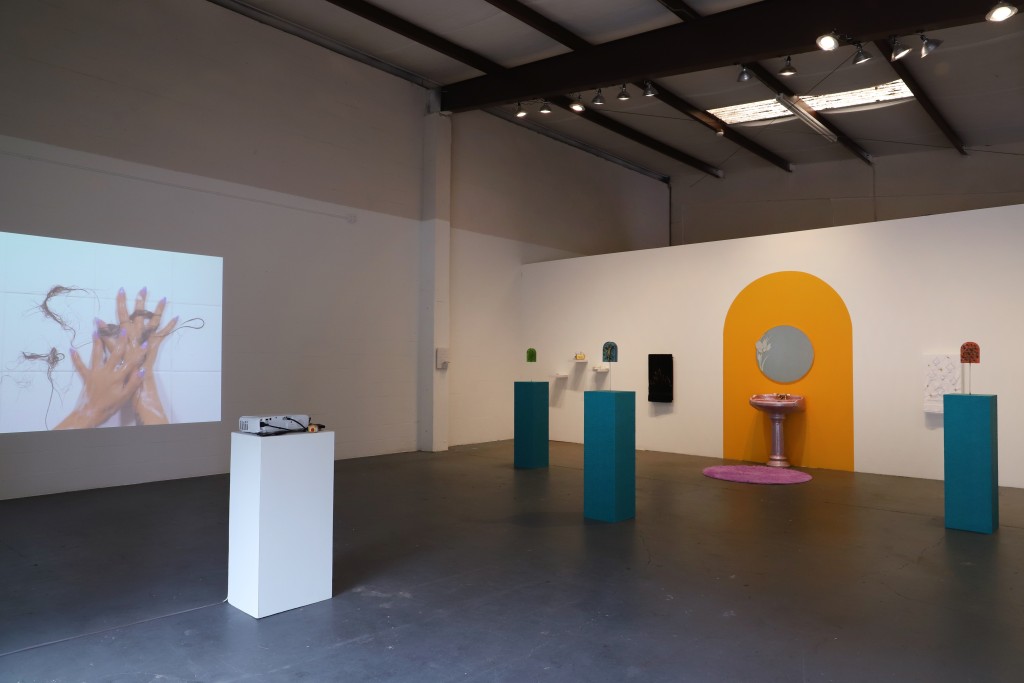
KR – How would you describe your work? To me personally, it’s very inspiring, especially the use of dark themes and bright colors.
MS – My work is mostly installation-based, so the separate components of any body of work are often meant to be viewed together. I enjoy creating “environments” in galleries where my viewers feel immersed. My work is humorous, campy and usually quite colorful.
Most of my work is focused on common stereotypes of women that reoccur through history, mythology, film and pop culture. I present these stereotypes in humorous and ironic ways to reclaim negative ideas about women.
Sometimes I do this through narrative video, sometimes through sculptural installation and sometimes through altered found objects.
I often utilize pink and purple as an obvious nod to representations of femininity. But I also incorporate other colors based on what mood I am trying to achieve in my work. I do sort of use absurdity as a recurring motif.
One thing that my videos, sculptures and installations all have in common is that I use everyday items and ideas but push them past the point of normalcy. For example, I recently made large cast soaps that contain flowers, glitter and supplements and placed them on pedestals to be viewed like a sculpture.
I can’t help but see absurdity in everything, and that gets reflected in my work.
Since most of my work is multi-media sculpture and installation, I don’t necessarily resonate with one material. I try to use whatever material is appropriate to achieve my conceptual goals.
Sometimes that’s video, sometimes, wood, sometimes fabric. I really enjoy working with all of these materials equally. I recently learned how to weave, though, and that has been a very relaxing and meditative process for me.
LM – How has your style changed over time?
In undergrad, I was a Jewelry/Metalsmithing major. While in school, I focused on making sculptural works for the body – always challenging the idea of “jewelry”.
After I graduated, I did a four-month residency in New Mexico and a two-month residency in east Iceland. During this time, I began working in a more sculptural, largescale way, and I also started using video in my work.
Graduate school furthered my love for both processes and it was during that time that I started making full-gallery installations. I like taking up large spaces and completely transforming them.
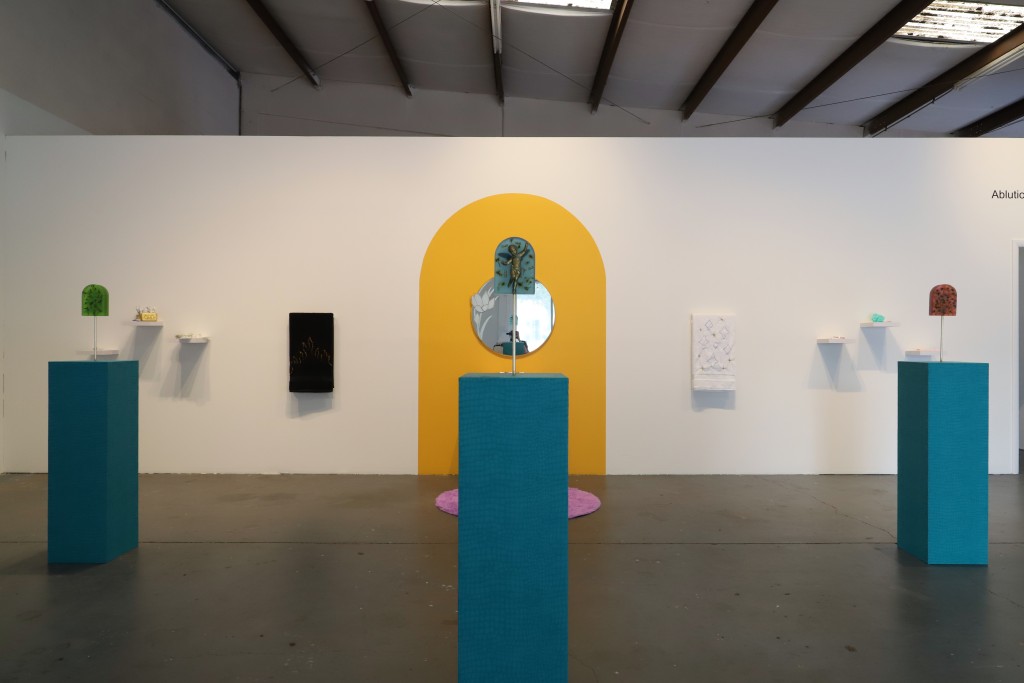
LM – Where do you find inspiration?
I pull a lot of my inspirations from readings on feminist theory, films, social media, pop-culture, and the shifting landscape of our economy and social structure. I also love pop-culture moments, and how they serve as an archive for what is and isn’t acceptable at any given point in history.
I feel constant motivation to make art just by viewing and absorbing the world around me. Seeing how different our society is each year gives me new material to explore. There are always new issues to be addressed.
For example, the shift in internet culture since the 1990s, but especially in the last 10 years, has been fascinating. And the ridiculous expectations of women since the dawn of time. I look at the ways women were condemned and judged 2000 years ago, 100 years ago, and 20 years ago – and how those things haven’t really changed.
I often use contemporary references and pop culture to portray ancient myths and historical female figures. Horror films are a huge inspiration because of the variety of female archetypes within them. I look at the ways that we have demonized pop-stars, how the virgin-madonna stereotype is constantly perpetuated in the media, and how companies prey on our insecurities to make money.
Even though that seems like a broad range of sources, I think they all feed into one another.
I often have young women approach me at exhibitions and artist talks who thank me for making work that is so relatable. Those moments are so incredibly special to me because, in a way, I feel like I can provide the validation to young women that I may have missed out on when I was younger.
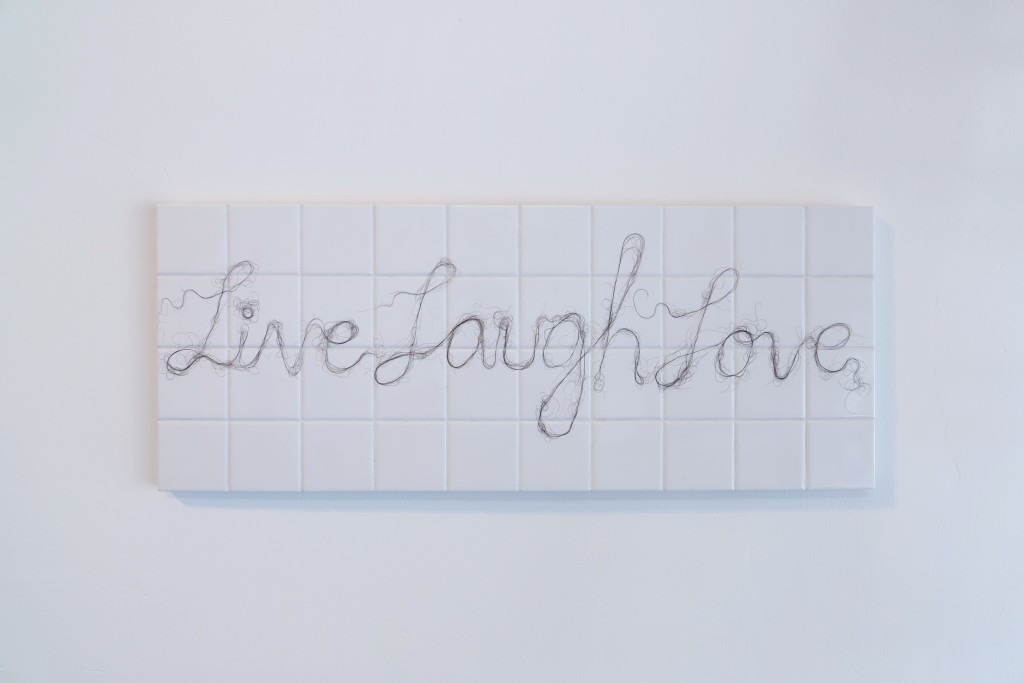
KR – Which artists inspire your work?
Just to name a few – Cindy Sherman, Nam June Paik, Do Ho Suh, Mika Rottenberg, Heather Phillipson, Shana Moulton, Juno Calypso and Rashid Johnson.
LM – When you think about all the art you have created throughout your life, is there any specific work you feel particularly connected to?
MS – I feel really connected to my first video installation, titled Joy Ride. The sculpture itself no longer exists, but I have great photos of it on my website.

This work was really special to me because it was the first time I combined video with sculpture which was a huge pivot in my studio practice. It’s essentially the reason I make the type of work that I make today.
The video portion of Joy Ride shows a female character who wears three custom pairs of high-heeled shoes – ones with butcher knives, ones with cleaning brushes, and ones with gardening tools.
The narrative of this video was based on a heavily abstracted memory I had of my mother, which also made it special to me because it was really cathartic to work through.
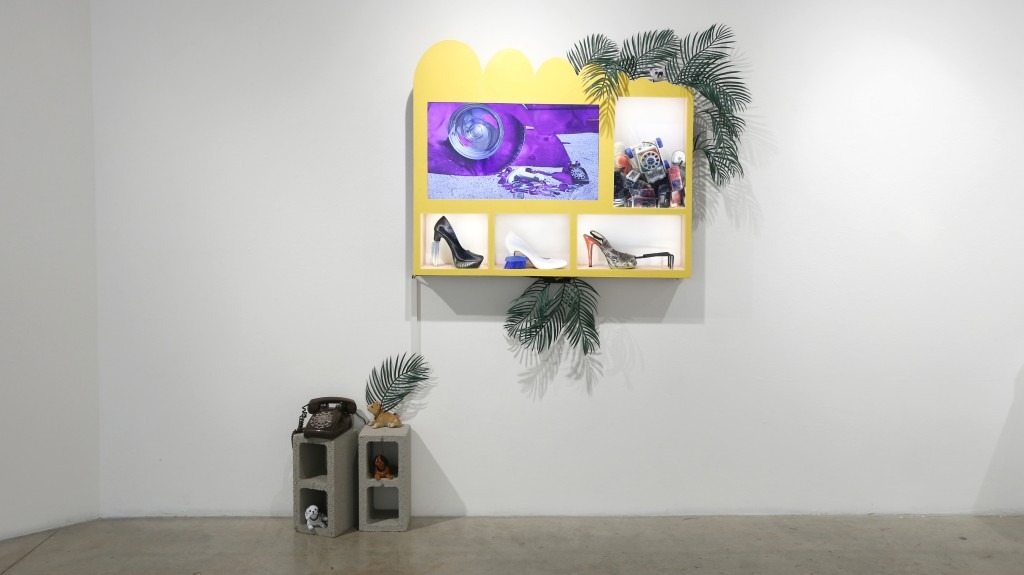
KR – What is the best space for you to create art? Do you listen to music or watch movies?
In my studio, which is at SPAACES [in Sarasota], I enjoy having my studio separate from my home because it allows me to mentally separate what needs to get done at home from what needs to get done in the studio.
I listen to music often when I work — usually, it’s either female vocalists like Lana del Rey and Weyes Blood or ’90s and 2000s hip-hop.
I listened to a lot of Akon while I installed my [most recent] exhibition. I can’t really watch movies while I work because my work involves a lot of moving around my studio.
LM – I know that you recently had an exhibition up. Can you tell us about Ablutions and Affirmations?
My exhibition used items and symbols from the bathroom to critique the commodification of “self-care” and the ways that humans, and specifically women, are sold products that promise cures for larger life problems. I also use hints of religious iconography to point to the God complex that large corporations have over us.
I have been thinking a lot about how computer algorithms are all-seeing and all-knowing, which limits – or at least challenges – our free will by creating constant temptation.
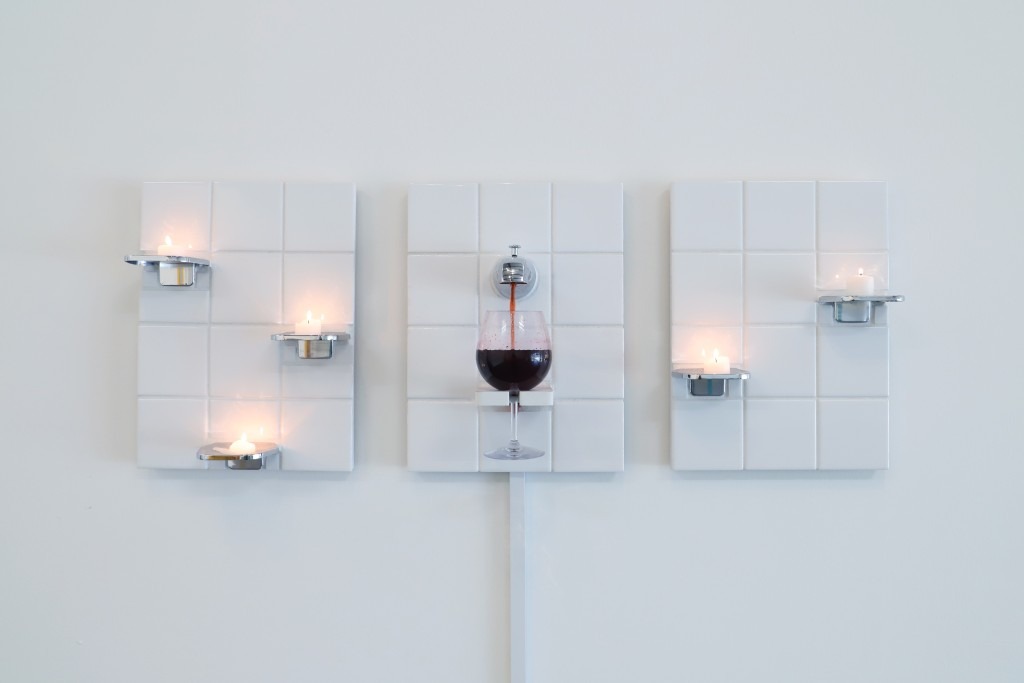
LM – Is there any specific topic or project you have in mind for the future?
Since I just finished a new body of work my brain hasn’t latched onto the next thing yet. I do want to stay busy though, so I have some ideas to experiment with some of the leftover materials from the things I just finished – bathroom tiles, vinyl, fabric, etc.
I plan to take some time to just make things that are formally appealing, but not based in any deep conceptual exploration.
